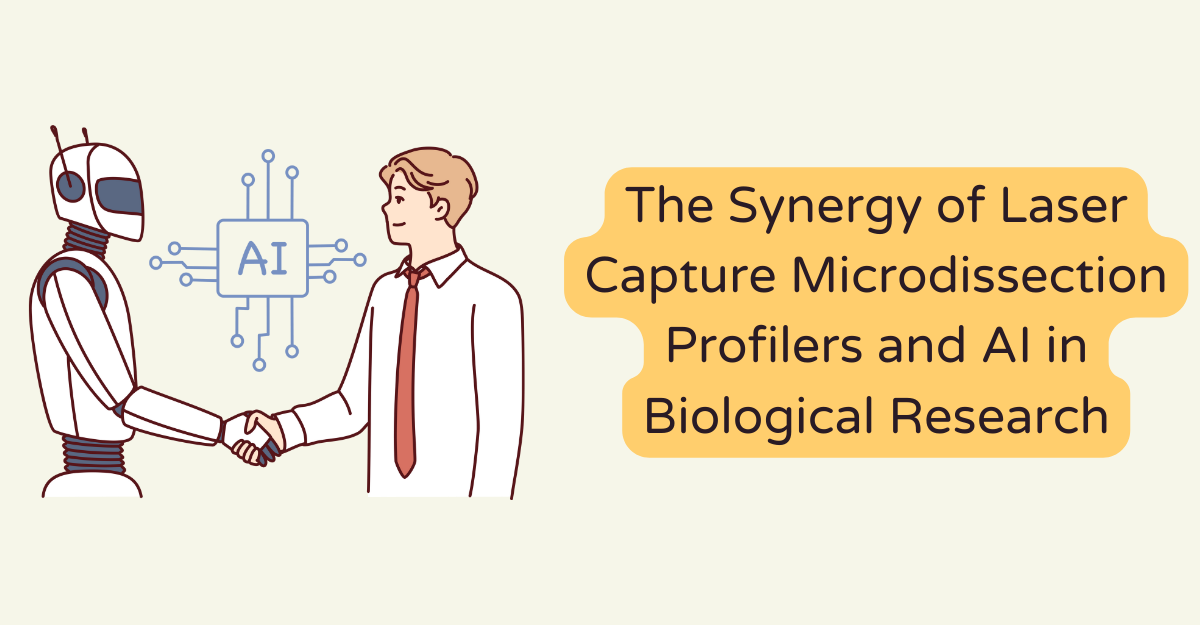
The Synergy of Laser Capture Microdissection Profilers and AI in Biological Research
In a world where the very cell can hold the cure to diseases, understanding their distinct behavior is the Rosetta Stone of biological research. Biologists and researchers are akin to linguistic anthropologists, deciphering the language of life at the most fundamental level. Enter laser capture microdissection (LCM) – a tool that allows us to pick out individual cells under a microscope to study them. But combine that with AI, and you’ve got a duo as formidable as Batman and Robin (sans the cool gadgets, but with equally high stakes). Here’s how LCM and AI are shaping the future of biological studies.
Understanding LCM Profilers
Imagine a technology that can pluck cells from a microcosm with unrivaled precision. LCM is that sci-fiesque instrument. Think of it as a fine-tip pen for cells, but instead of writing, it ‘draws’ them onto a collection surface. This process, known as microdissection, is laser-guided to excise cells or tissues of interest, preserving their molecular profile with impeccable precision. A spatial profiler (SP) is the device that accomplishes this task. Its user interface shows an area of interest, and with a few clicks, the SP calculates the laser energy needed to isolate it.
The goal is clarity – by isolating and studying purified cell populations, the nuances that often elude bulk tissue analyses can be revealed.
How LCM Works, in a Cellular Nutshell
- Phase One – Target Acquisition: A researcher maps out the cells of interest on a computer, guiding the laser to mark the spots.
- Phase Two – Ablation: The laser pulses and cuts around the marked area.
- Phase Three – Collection: The targeted cells fall to a collection device—a stage the size of a grain of salt.
- Results: Clean, unaltered cells, ready for analysis.
The AI Ingenuity
Within the realm of ‘Omic’ sciences – genomics, proteomics, and metabolomics – AI shines as a lantern in an otherwise dark and complex cave. Armed with machine learning and data analytics, AI sifts through the billions of data points from these cell assays, seeking patterns and correlations.
AI Unlocks the Data Vault
- Pattern Recognition: AI identifies complex patterns that might elude the human eye, offering a deeper level of understanding.
- Predictive Modeling: Leveraging the data sets, AI can predict cell behaviors and suggest experimental pathways.
- Real-time Feedback: Integration with LCM technologies offers the potential for on-the-fly analysis and unprecedented decision-making during experimentation.
Real-world Impact and Applications
LCM technologies have already made seismic shifts in fields as diverse as cancer research and neurobiological studies, but the full extent of their contribution is still unfolding.
Precision in Cancer Research
- Tumor Heterogeneity: LCM combined with AI allows for a precise dissection of the tumor microenvironment, a crucial factor in understanding drug resistance and personalized medicine.
- Mutation Analysis: By combining LCM with next-generation sequencing, researchers can study specific mutations within a tumor, offering insights into oncogenic pathways.
Unraveling the Mysteries of Neurobiology
- Brain Atlas Creation: LCM-AI partnerships aim to create comprehensive brain atlases at the cellular level, offering a roadmap for conditions from Alzheimer’s to neural developmental disorders.
- Single-cell Sequencing: The isolation of single cells is critical for studying the brain with this level of detail, which in turn informs our understanding of how the brain functions and develops.
Challenges and Ethical Considerations
The integration of LCM and AI isn’t without its pitfalls. Ethical considerations—such as the use of human tissues—must be addressed with sensitivity and transparency. The technology itself is also not without minutiae that require finesse.
High-cost Hurdles
- Instrument Costs: LCM technology can be significant, as can maintenance and operating costs.
- Experiment-to-Experiment Variation: The LCM process can be labor-intensive and prone to variability, requiring careful optimization of protocols.
Maintaining Data Integrity
- Cross-contamination Concerns: Working with such tiny samples means the risk of contamination is high, necessitating stringent lab practices.
- Reproducibility Challenges: Ensuring studies are reproducible is a key challenge in any scientific technology and is particularly pertinent in protocols requiring such precise manipulation.
The Future is at the Cellular Level
The promise that LCM coupled with AI brings to the table is not just incremental. It’s revolutionary. Being able to study the building blocks of life at unprecedented resolutions is like being given a microscope when everybody else is using a telescope. The advancements in uncovering disease mechanisms, specifically within cancer and neurobiology, could pave the way for targeted interventions that were once the stuff of science fiction.
However, technological innovation is one half of the puzzle. The other lies in responsible and equitable usage. Balancing the excitement for discovery with the ethical implications that come with such capabilities is imperative. When wielded with care, the dynamic duo of LCM and AI is poised to be the biological research blueprint for precision and understanding in the not-so-distant future of biotechnology.
In conclusion, the future of biological research is as bright and intricate as the laser beams guiding tech like LCM. Here’s to the trailblazers and gumption-rich researchers who dare to enter the micro world, equipped with the finest tools science can provide!





